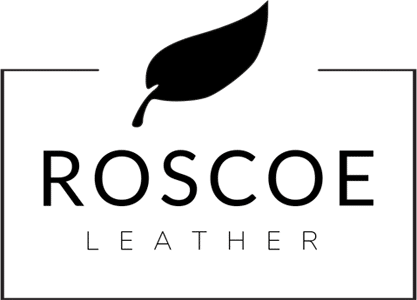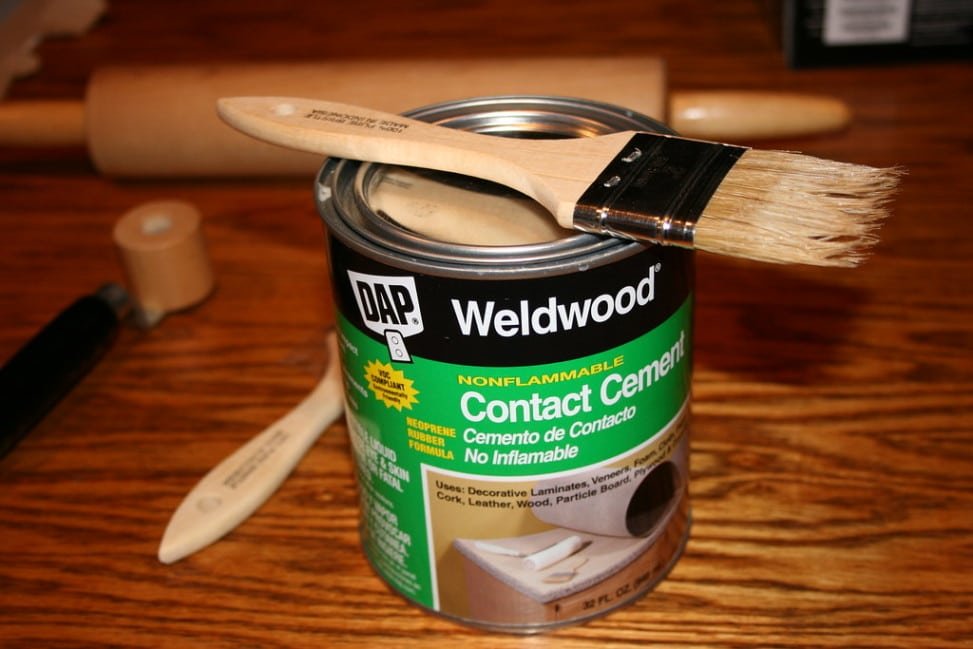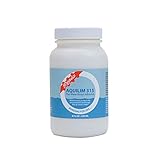In this post, we will cover the topics of adhesives and glue used in leathercraft as below:-
- What is adhesive / glue in leathercraft?
- When do I use adhesive / glue in leathercraft?
- Types of adhesive / glue in leathercraft
– Contact adhesive
——- Solvent-based contact adhesive
——- Water-based contact adhesive
– PVA type adhesive - What adhesive / glue should I choose as a leathercraft beginner?
What is adhesive / glue in leathercraft?
Definition of adhesive (wikipedia) : Adhesive, also known as glue, cement, mucilage, or paste, is any non metallic substance applied to one or both surfaces of two separate items that binds them together and resists their separation.
Basically, adhesive is the general term for the substance used to join two pieces of material. In leathercraft, the terms adhesive, glue, and cement are used interchangeably.
When do I use adhesive / glue in leathercraft?
Adhesives are used for various functions in leathercraft. Basically, it is used for joining two pieces of leather or even joining leather and another type of material (rubber, fabric, wood, etc).
Most commonly, adhesives are used to assist with the stitching process. It is part of the pre-stitching process where you prepare the leather for stitching. Before joining two pieces of leather, we will need to hold the pieces together to ease the stitching process. For this purpose, we use adhesives in leathercraft. Kindly refer to the infographic below to understand the typical role of adhesives in the leathercraft stitching process.

As illustrated above, before stitching you will need to prepare the leather. By using adhesive, the pieces will be held in place and the stitch holes will be consistent. I can’t imagine stitching two pieces of leather without using adhesive.
Step 1: Cut the leather pieces
Step 2: Apply adhesive
Step 3: Mark stitch line
Step 4: Create stitch holes
Step 5: Stitch the pieces together
Types of Leathercraft Adhesive / Glue
There are two main types of adhesives that are commonly used in Leathercraft. Below are the general differences between the two. Detailed explanation for each type will be explained further below in the post. Click on the names to jump ahead.
- Contact Adhesive
– Solvent-based Contact Adhesive
– Water-based Contact Adhesive - PVA Type Adhesive
– Commonly known as wood glue, white glue, carpenter’s glue, school glue, Elmer’s glue in the US, or PVA glue
| Contact Adhesive | PVA Glue |
| Instant Bond when in contact | Bond is not immediate |
| Useful in leathercraft / leatherwork because you can get on with the job without waiting for too long | There are cases where you don’t want an instant bond. You want a bit of time to reposition the pieces. |
Contact Adhesive
Contact adhesive is also known as contact cement. Contact cement is super strong. It is called contact cement because of how it works. Its not like normal glue where you glue something and stick it down.
With contact cement, it works by applying it to both leather surfaces, allow it to go a bit tacky and then you bring those surfaces together. You will get an instant bond. The bond is very very strong. Consider it a permanent bond. There will be no “second chances”, thus you need to be precise and careful when joining both pieces together.
The pieces won’t stick together if the cement is still wet or if you only apply the adhesive to only one of the pieces.
Solvent-Based Contact Adhesives
Solvent-based contact adhesives are commonly used by leathercrafts and can be bought from your local hardware or DIY shop. One of the most common solvent-based contact adhesive is Barge All Purpose Cement in the classic red yellow can. It works like a charm, the bond is very strong.

However, there is a big downside to the barge cement. It is super toxic and hazardous to health. You need to be in well-ventilated room when you are using these. Even by doing it next to a window, somehow you can stink out the whole room or house. The toxic fumes really mess with your brain. If you are doing a lot of glueing work for a prolong period of time, you will get light headed.
If your preference is solvent-based, you probably need to source another brand other than barge. There are other brands that toned down the “toxic-ness”.
Water-Based Contact Adhesive
Then came the modern alternative which is water-based contact adhesive. It is the same as Barge but definitely not as toxic. It is considered non-toxic much safer to work with, definitely won’t get a headache and it is really strong as well. Water-based contact adhesives utilize the same basic application methods as solvent-based cement, with the additional option of spray application.
Previously i used EcoWeld Water Based Contact Adhesive from Tandy for gluing all my leather pieces before stitching, however i have moved on to Renia Aquilim 315 Odorless Water Based Contact Cement.
Best Deal on Aquilim 315 Water Based Contact Cement on Amazon!
I don’t see a reason to use solvent-based cement unless you already bought a few gallons. Else, just go with the water-based adhesives.
Another plus point for water-based adhesive is that you can actually smell the leather instead of the barge cement.
PVA Type Adhesive
Polyvinyl acetate (PVA, PVAc, poly(ethenyl ethanoate): best known as wood glue, white glue, carpenter’s glue, school glue, Elmer’s glue in the US, or PVA glue) is an aliphatic rubbery synthetic polymer with the formula (C4H6O2)n.
Basically, it is plain old white glue. There is a product called Fiebing Leathercraft Cement. It is meant to be flexible and more suitable for leathercraft rather than the traditional PVA glue used in wood work and other crafts.
Get Fiebing’s Leathercraft Cement – Best Deal on Amazon!
This is a general-purpose glue that can be used for anything. There are cases where you don’t want an instant bond. You want a bit of time to reposition the pieces before it dries. Then this will be a suitable option.
What adhesive / glue should I choose as a leathercraft beginner?
Ultimately, if you will perform final stitching to join the pieces, you can use any kind of adhesive to hold the leather pieces together. Any multipurpose glue like super glue, double-sided tape or even craft glue will work.
If you won’t be doing any stitching and you need a permanent bond, contact adhesive will be the way to go. I recommend working with the water-based contact adhesive as it is non-toxic and I can’t stand the smell of barge.
Personally, I use Renia Aquilim 315 Odorless Water Based Contact Cement for everything.
Pro tip: If you left the cap open and it starts to dry up, just add water because it is water-based!
In the next chapter, we will talk about the types of leather finishes in leathercraft / leatherwork.
Leathercraft Basics – Table of Content
Chapter 1: Leathercraft Basics Introduction
Chapter 2: Understanding the Leathercraft Process
Chapter 3: Tools Needed for Leathercraft
Chapter 4: Leather Explained – Choosing The Right Leather
Chapter 5: Leather Dye
Chapter 6: Burnishing Agents
Chapter 7: Adhesive / Glue (You are here)
Chapter 8: Leather Finishes
Chapter 9: Leathercraft Techniques (Coming Soon)
Chapter 10: Machinery used in Leathercraft (Coming Soon)
Credit: Featured Image by kingdesmond1337




